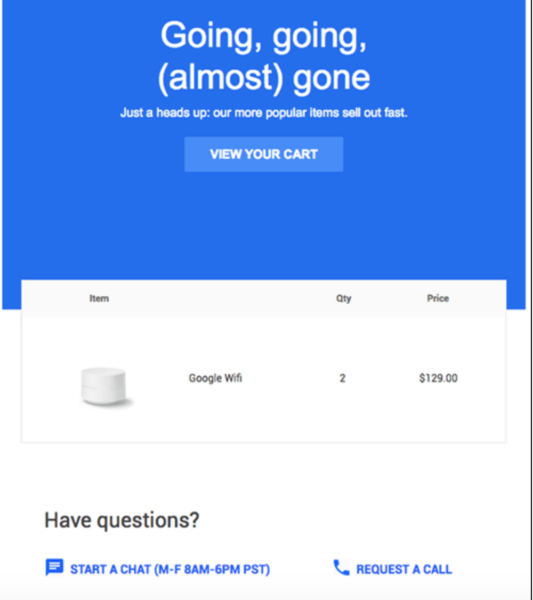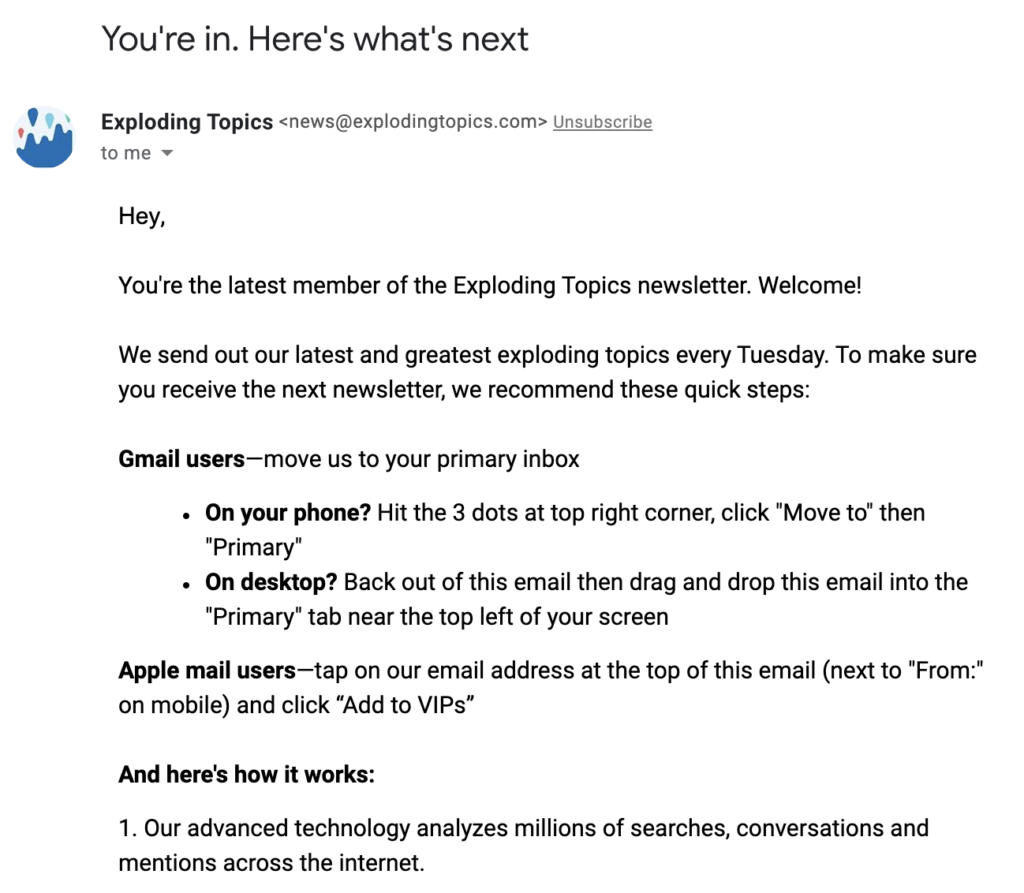Based on research at Stanford University, simply adding the recipient’s first name to an email’s subject line increases their likelihood of opening it by 20% while lowering their odds of unsubscribing by 17%.
Given the impact email personalization can have, the question isn’t whether to personalize your emails, but how to do so further and at scale.
A solution: drip marketing automation.
Using this form of marketing automation, you can segment your recipients by behaviors and demographic-type info, and automatically deliver emails to each that are more likely to spur engagement.
We’ll break down how, exactly, drip marketing automation works, review some of its real-world applications, highlight various benefits it delivers, and even offer up best practices for implementing it. That way, you’ll have all the background you need to start putting it to use at your organization!
Related: The 4 steps for implementing any marketing automation
What is Drip Marketing Automation?
Drip marketing automation, or simply drip automation, is the use of triggers and actions to execute either a scheduled or a behavior-based email campaign. It involves a platform that can “listen” to your apps for business events (or triggers) and, once the conditions are met, deliver real-time business outcomes (or actions).
Examples of Drip Marketing Automation
With this definition in mind, let’s explore some of the ways you can implement drip marketing automation:
Newsletter Sign Ups
This top-of-funnel example lets you message prospects and customers who sign up for your marketing newsletter.
You can start by instantly sending them an email once they sign up. This touchpoint can confirm that they’ve successfully registered, as well as explain items like when the emails will be delivered and why they should be excited about reading them.
For example, here’s the email Exploding Topics (a platform that identifies trending topics) sends after you sign up for their newsletter:
From there on out, you can automatically deliver the newsletter on a time-based cadence—most organizations choose to deliver theirs monthly, bi-weekly, or weekly.
Abandoned Shopping Carts
This drip marketing campaign example gets triggered when a prospect adds items to their shopping card but proceeds to leave your site.
Automatically emailing them soon after about their shopping cart and the reasons why they should move forward with the purchase can be all it takes for them to return and buy the item(s).
Here’s an example from Google Store that tries to build urgency, claiming that the item is likely to sell out soon.

Customer Engagement
As you work with a number of customers, it can be hard to keep track of each and reach out proactively. Customer engagement emails can do this on your behalf in an effort to spur engagement.
You can set it up so that customers who haven’t performed a certain type of activity automatically qualify and receive the touchpoint.
For instance, here’s an email that HootSuite, the leading social media dashboard, sends to those who haven’t logged in for a certain amount of time.

There’s a whole host of other drip email campaigns we can share, from welcoming customers to confirming transactions, but with these examples in mind, you should have a solid grasp of how drip marketing automation can work.
Related: How product usage data can deliver better experiences for prospects and customers
Benefits of Drip Marketing Automation
Here are 5 reasons why a marketing automation drip campaign is valuable:
1. It improves business performance
By sending more personalized messages to your target audiences, you can not only improve your email metrics (like open rates and click-through rates), but also see a tangible impact on more important business KPIs, like improvements in customer retention and higher new business sales.
2. It delivers great experiences for customers and prospects
As your drip campaigns share valuable top-of-funnel content via your newsletter, walk customers through using your product, remind prospects to complete a purchase, etc. you’re ensuring that you deliver valuable content while showing that you care about the recipients and their individuals needs.
3. It is easy to implement and maintain
Once you’ve set up a drip automation, you can let it run on its own. This makes your employees lives significantly easier than if they were to send each email manually and it gives them a substantial amount of time back—which they can reallocate towards more business-critical work.
Related: 3 ways that content automation can help your business
4. It offers an array of use cases
As you can tell from the previous section, you can apply drip marketing automation all across the prospect and customer journey. As you do, you’re likely to see a higher return on investment.
5. It opens up a new distribution channel for your content
Your writers spend countless time churning out valuable pieces of content in places like your company’s blog. Many of these pieces don’t see the light of day as their distribution is largely limited to search engines.
Drip marketing allows your writers to share more of their content with prospects and customers, which not only leads to higher content engagement, but also improves your brand’s relationship with readers.
Best Practices for Implementing Drip Marketing Automation
At this point, you’re probably excited to get started. Before you do, keep the following tips in mind:
- Prioritize the drip campaigns that matter most. You and your team may be able to ideate dozens of potential drip automations. Try to focus on those that are more closely connected to your business needs first. For example, if your business needs to improve customer retention, add customer engagement emails to the top of your list.
- A/B test the email copy and designs. Though you can set and forget drip campaigns, you can always improve their performance. For each campaign, you can try out a couple subject lines and see which leads to a higher open rate; use a few variations of body copy and monitor the click-through rates with each; and try a few designs to pinpoint the one that drives the most engagement.
- Use an enterprise automation platform to build out any drip automation. This type of platform can provide the triggers and actions your drip automations need in order to work.
Use Workato to Build Any Drip Automation
Workato, the leading enterprise automation platform, allows you to build end-to-end drip marketing automations without writing a single line of code.
Learn more about using the platform to streamline your marketing campaigns by scheduling some time with one of our automation experts!

